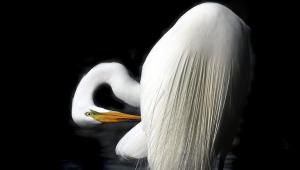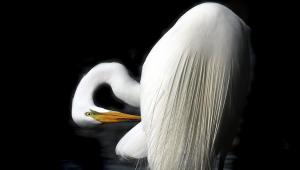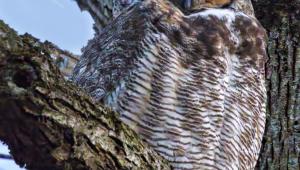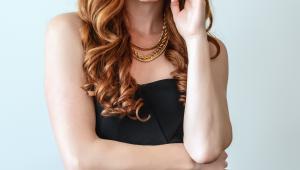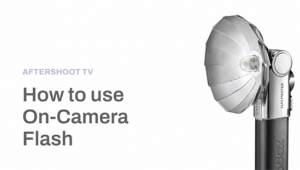Instant Exposure Check
How And Why To Use Your Histogram Page 2
This overexposure in the blue channel was not shown by the camera's
histogram, as it uses an average of all the three channels (most often they
use a so-called luminance histogram, where green gets valued higher than red/blue).
In this difficult situation, it would be very helpful if you also had histograms
for the three color channels. The only cameras we know of that have this are
the Fujifilm FinePix S2 Pro and the new Canon EOS-1D Mark II. The Canon EOS-1D
Mark II shows a histogram as indicated in #3.
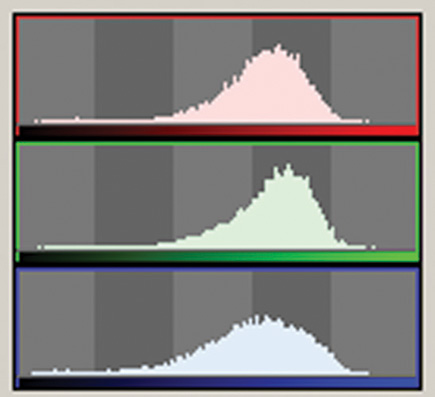 |
|
|
The "After" Histogram
Most cameras allow you to inspect the histogram as part of the instant preview.
Image 4 shows an example from the Nikon D70.
Of course, the "after" histogram only helps if you can repeat the
shot. Fortunately, in nature photography, this is often the case except for
photographing birds and other wildlife. This procedure is contingent on the
light not changing and with subjects that can be reposed. Even so, with general
shooting we can check the histogram once in a while.
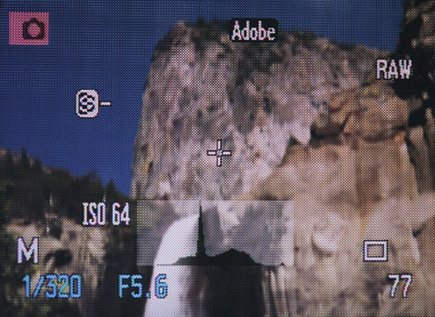 |
|
|
The "Before/Live" Histogram
The ideal situation would be a "live" histogram to use instead of
the camera meter. For digicams this dream actually has come to be true. The
new 8-megapixel Konica Minolta DiMAGE A2, Sony F828, and Olympus C-8080 all
sport live histograms. Image #5 shows the LCD of the Konica Minolta DiMAGE A2.
 |
|
|
Implementing live histograms in digital SLRs will be more tricky as the sensor is hidden by the mirror. One thing is for sure--refined versions of live histograms are the way to go for ultimate exposure control.
- Log in or register to post comments
